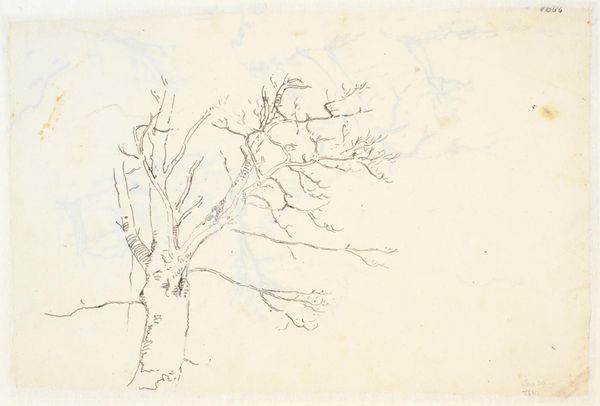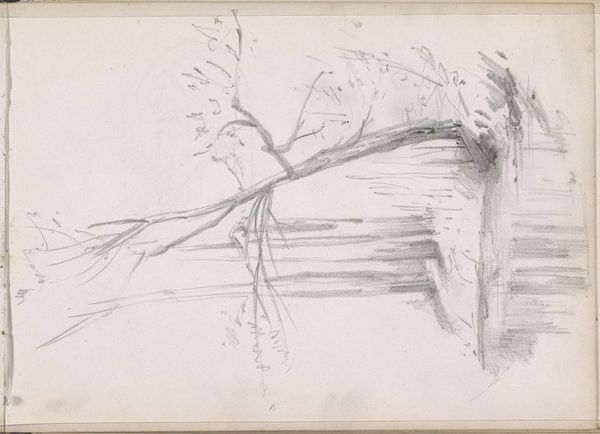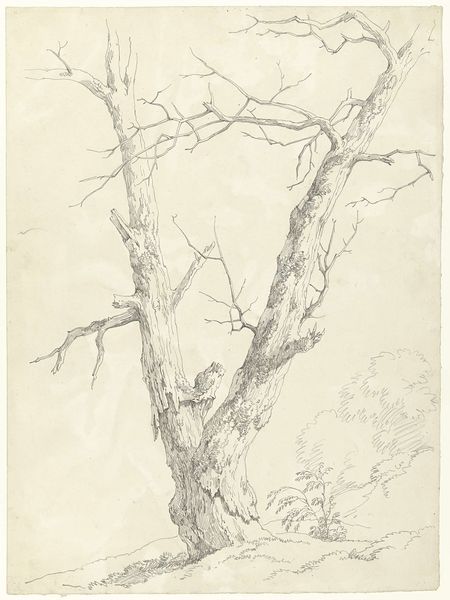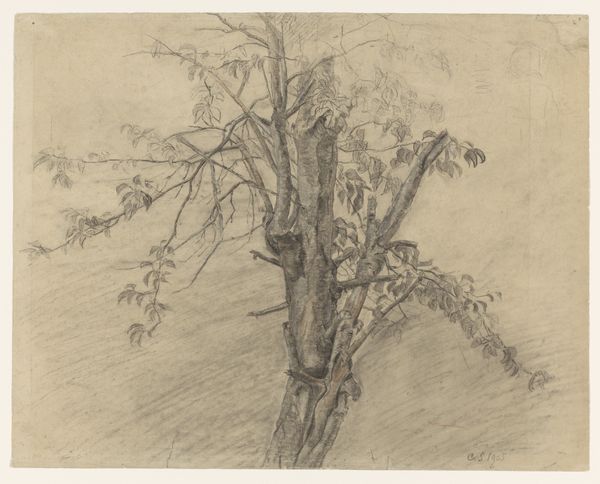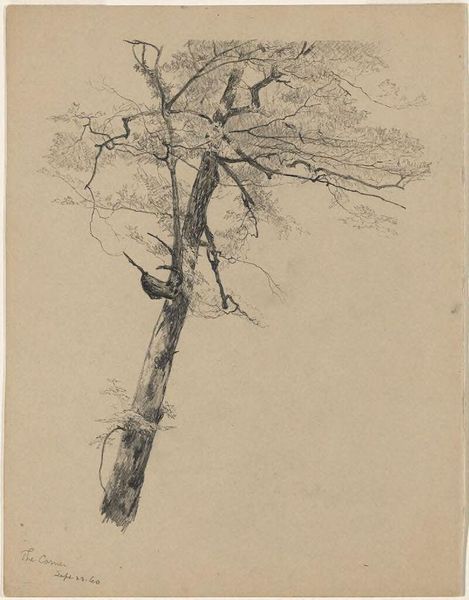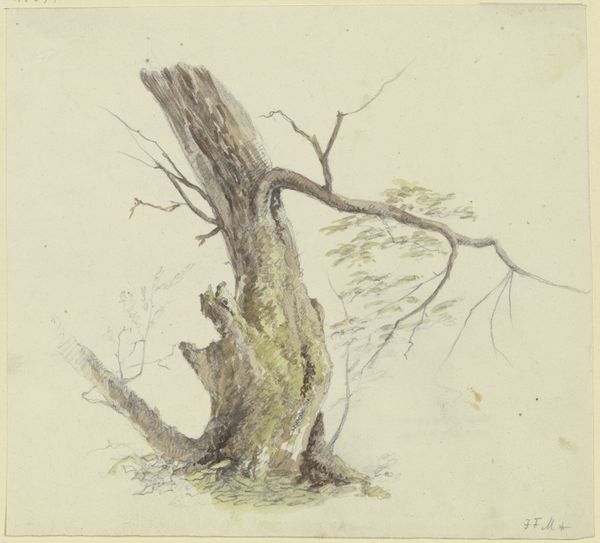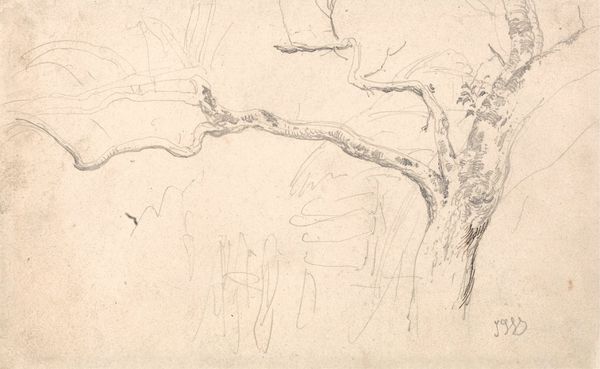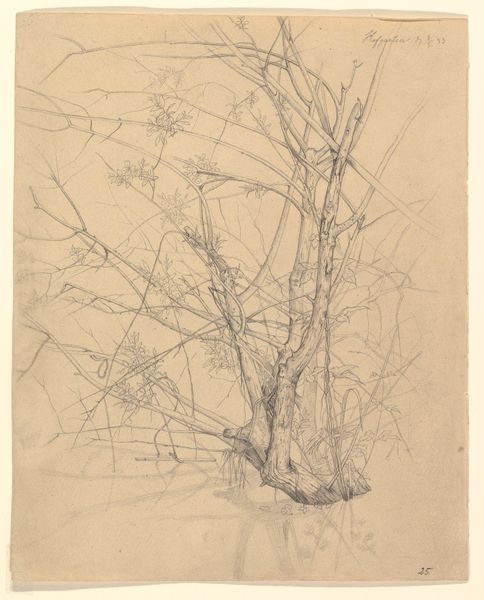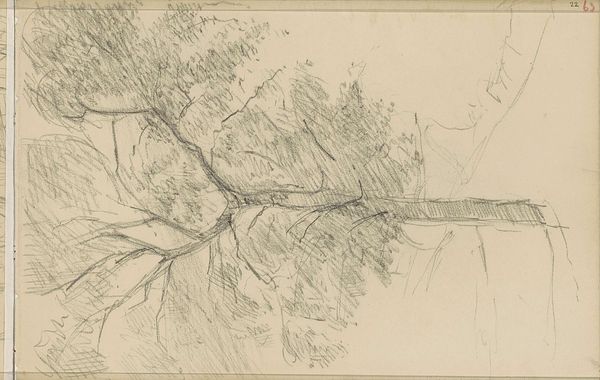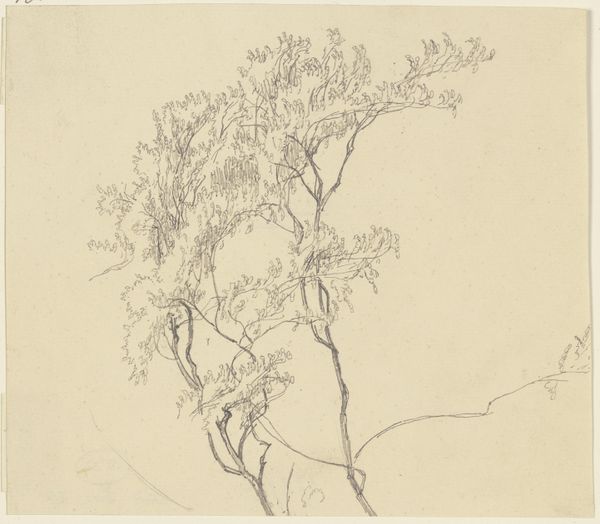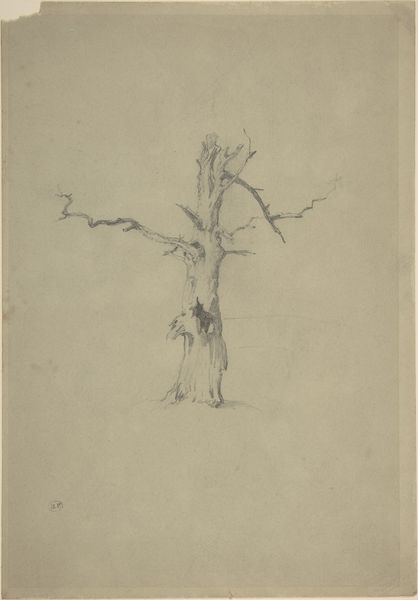
drawing, dry-media, pencil
#
drawing
#
pencil sketch
#
landscape
#
botanical illustration
#
etching
#
dry-media
#
pencil
#
botanical drawing
#
academic-art
#
botanical art
#
realism
Dimensions: height 163 mm, width 172 mm
Copyright: Rijks Museum: Open Domain
Editor: This is "Study of a Tree" by Jean Bernard, dating back to 1816. It’s a pencil drawing, currently held at the Rijksmuseum. It feels so delicate and precise, almost scientific in its observation. How would you interpret this work from a formalist point of view? Curator: Note the careful attention to line and form. The composition leads the eye upward, along the trunk. Observe the contrast between the thicker lines defining the trunk and the delicate, almost ephemeral, lines that sketch the branches. What strikes you about this contrast? Editor: It gives a real sense of depth, doesn't it? The trunk feels grounded and solid, whereas the branches suggest a reaching out, an ephemerality. Curator: Precisely. The varying line weights articulate space and volume without the need for extensive shading. Bernard uses the inherent qualities of the pencil itself, exploring the range of tones and textures achievable with this medium. The absence of color further emphasizes the linear quality and structural elements. Do you see how the individual lines build the overall structure? Editor: I see how each branch has different character depending on its thickness, its angle… It makes the tree seem more lifelike. Curator: Indeed. It exemplifies how line and form themselves can be powerful tools for artistic expression, even divorced from subject matter or symbolic meaning. We can see here a mastery of observation. Editor: So, it's more about the 'how' than the 'what' in this particular drawing? That’s helpful. Curator: Exactly. Consider how form and structure interact and the language created thereby. Editor: Thank you. I’m beginning to see drawings in a different light.
Comments
No comments
Be the first to comment and join the conversation on the ultimate creative platform.
